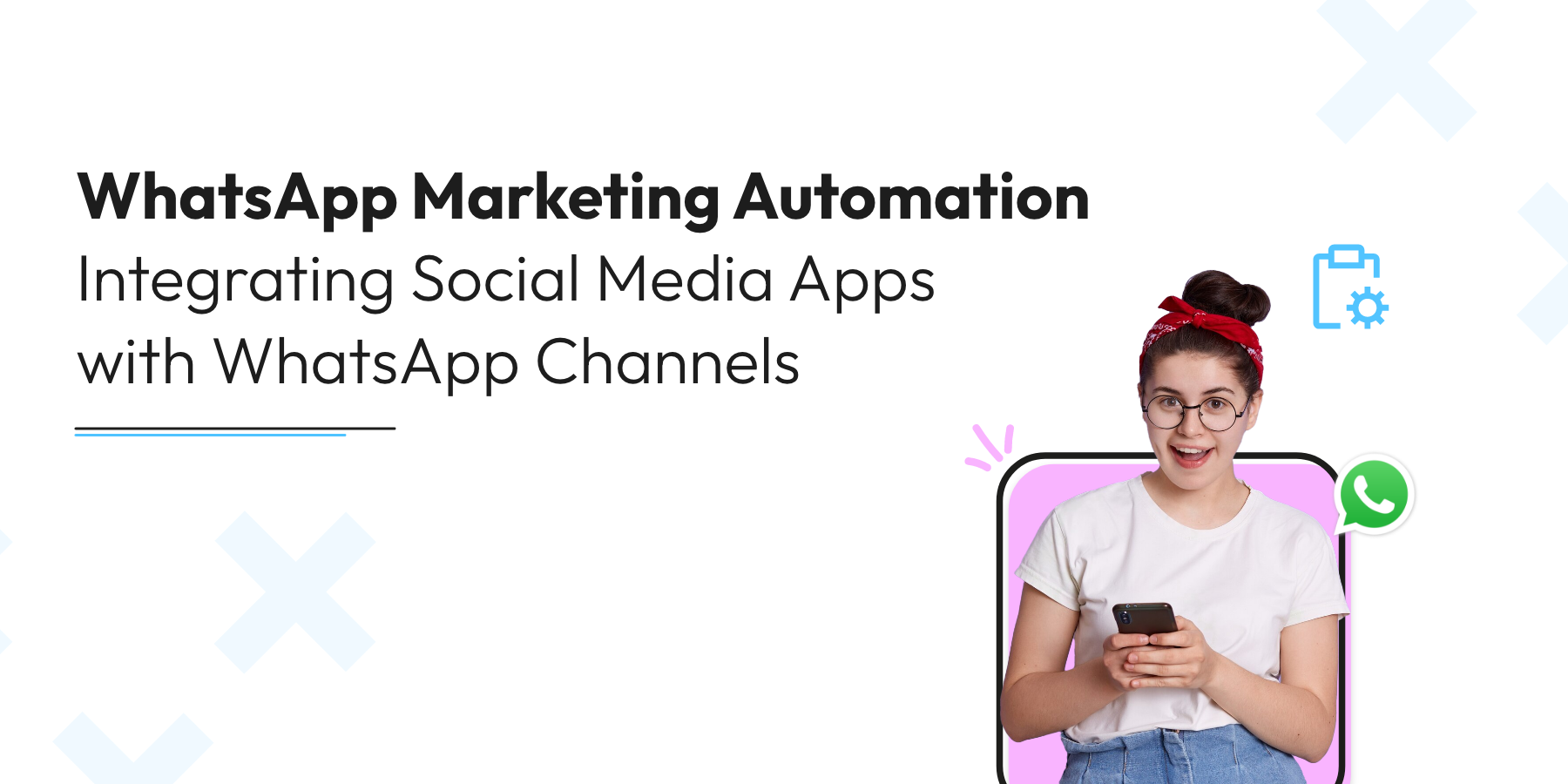WhatsApp marketing automation involves integrating social media apps with WhatsApp channels to streamline communication and marketing efforts. Here’s a guide on how to achieve this:
Understanding WhatsApp API and Channels:
- WhatsApp Business API: Allows businesses to connect their systems with WhatsApp to send notifications, provide customer support, and facilitate transactions.
- WhatsApp Business App: Designed for smaller businesses to manage their WhatsApp presence directly from a mobile app.
Setting Up WhatsApp Business Account:
- Create a WhatsApp Business Account through the WhatsApp Business app or apply for access to the WhatsApp Business API.
- Verify your business to gain official status and access to API features.
Choosing Integration Platforms:
- Select a platform that supports integrating social media apps with WhatsApp channels. Examples include Zapier, Integromat, or custom API integrations.
Integrating Social Media Apps:
- Connect your existing social media platforms (e.g., Facebook, Instagram, Twitter) to the integration platform.
- Configure triggers and actions to automate tasks based on social media interactions.
Setting Up WhatsApp Integration:
- Depending on the integration platform, connect your WhatsApp Business Account or API credentials.
- Define workflows to send automated messages, notifications, or responses based on triggers from social media activities.
Automation Scenarios:
- Lead Generation: Automatically send follow-up messages or promotions to leads who interact on social media.
- Customer Support: Respond to queries received on social media through WhatsApp for faster resolution.
- Campaign Management: Send updates, alerts, or promotional messages simultaneously across social media and WhatsApp channels.
Compliance and Regulations:
- Ensure compliance with WhatsApp Business API policies, data protection regulations (e.g., GDPR), and local laws governing messaging and marketing communications.
Testing and Optimization:
- Test the integration thoroughly to ensure messages are delivered correctly and promptly.
- Monitor performance metrics such as response times, engagement rates, and conversion rates.
- Optimize workflows based on analytics to improve effectiveness and efficiency.
Deployment and Scaling:
- Once tested, deploy the integrated solution for ongoing marketing automation.
- Scale the automation as needed to handle increased volumes of interactions and messages.
By integrating social media apps with WhatsApp channels using automation tools and platforms, businesses can enhance their marketing efforts, improve customer engagement, and streamline communication workflows effectively.

Here are some frequently asked questions (FAQs) about building a chatbot using XpressBot, focusing on integration and deployment:
What is XpressBot?
- XpressBot is a framework for building chatbots using Python and Flask, designed for integration with messaging platforms like Facebook Messenger and Telegram.
What are the steps to build a chatbot with XpressBot?
- The steps typically involve setting up a Python environment, creating routes for handling user queries, integrating with messaging platforms, and testing before deployment.
Which programming languages are used with XpressBot?
- XpressBot primarily uses Python for backend development. Flask is commonly used for creating web applications and APIs.
How do I integrate XpressBot with messaging platforms like Facebook Messenger?
- Integration involves setting up webhooks, configuring API credentials, and handling incoming and outgoing messages using XpressBot’s decorators and functions.
What are the advantages of using XpressBot for chatbot development?
- XpressBot simplifies the process of building and deploying chatbots by providing a structured framework with built-in support for handling user interactions and integrating with external services.
Can XpressBot handle natural language processing (NLP)?
- While XpressBot itself doesn’t include advanced NLP capabilities out-of-the-box, it can integrate with NLP libraries like NLTK or spaCy for handling natural language understanding and generation.
How do I deploy a chatbot built with XpressBot?
- Deployment involves hosting your Python application on a server (e.g., Heroku, AWS) and configuring it to handle incoming requests from messaging platforms through webhooks.
What are some common use cases for chatbots built with XpressBot?
- Use cases include customer support automation, FAQ bots, lead generation, e-commerce assistance, and internal process automation within organizations.
What kind of support and community resources are available for XpressBot developers?
- XpressBot provides documentation, tutorials, and community support through forums or developer communities to help developers troubleshoot issues and learn best practices.
